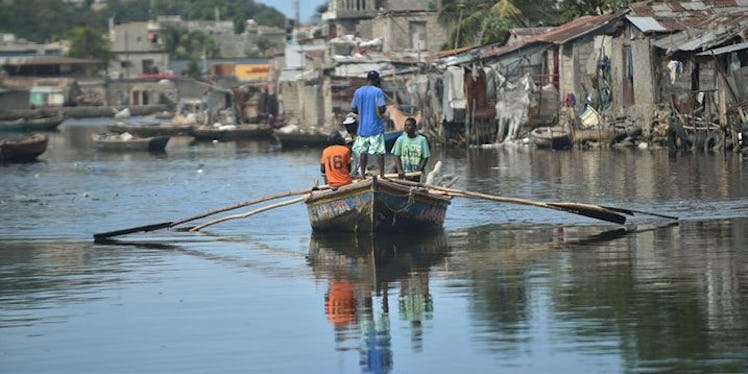
Hurricane Irma Has Hit Land And The Footage Is Frightening
On Wednesday morning, Sept. 6, Hurricane Irma finally hit land. Packing wind speeds up to 185 mph, the Category 5 storm made landfall over several small islands east of Puerto Rico, including St. Martin and Anguilla. Now, as more reports of the storm's damage emerge, videos of Hurricane Irma show the extent of some of that damage.
Different account from different islands paint a grim picture as well. In Barbuda, Irma tore the roof off a police station, forcing officers to go to a nearby fire station for shelter instead, according to the Associated Press.
In St. Martin, one person, Virginia Barreras, told CNN that the wind and rain caused by Irma was so strong that she couldn't see. Barreras, said,
The palm trees are bent over and [I] can't see anything but white. The walls shake when the wind blows hard, and we can hear debris being thrown around.
On the same island, a government official said St. Martin's strongest buildings had been made vulnerable by the storm.
We know that the four most solid buildings on the island have been destroyed which means that more rustic structures have probably been completely or partially destroyed.
Videos of the Hurricane's wind and rain, however, are most telling.
Hurricane Irma's path shows potential to take the storm towards South Florida by Sunday, which prompted state Gov. Rick Scott to declare a state of emergency on Monday night. President Donald Trump followed up Scott's action and also declared a state of emergency.
Before hitting the mainland U.S., the storm is expect to hit Puerto Rico by Thursday. Afterwards, it will be on track to impact the Dominican Republican, Haiti and Cuba, all to varying degrees.
Then, at the weekend, attention will turn to Florida, where Gov. Scott warned residents on Tuesday,
If there is an evacuation order in your area, please follow it. We can rebuild your home but we cannot rebuild your life.
To date, Hurricane Irma is strongest storm recorded in the Atlantic Ocean.